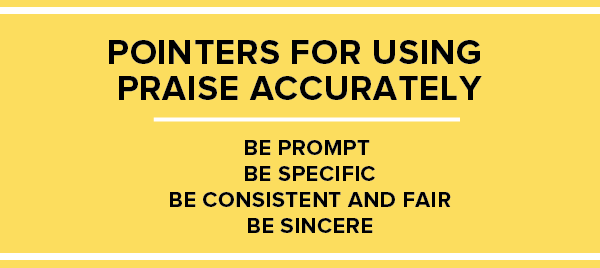 If you’ve seen any of the recent research on what motivates employees in the workplace, you’ll run across several repeating items, such as “having the ability to make an impact,” “recognition for a job well done” and “the opportunity to progress in the company.”
If you’ve seen any of the recent research on what motivates employees in the workplace, you’ll run across several repeating items, such as “having the ability to make an impact,” “recognition for a job well done” and “the opportunity to progress in the company.”
A motivating and engaging workforce is one way to ensure that you have a team committed to driving the success of your company.
While compensation still has an impact on employee performance, many studies have found a plethora of non-monetary techniques to use to motivate your team.
Here are the two most popular of those non-monetary ways to motivate your employees, along with some suggestions on how to use them the right way:
Non-Monetary Ways to Effectively Motivate Your Employees
Recognize with Praise.
If team members do something good, you give them a pat on the back and tell them what a great job they did. Sounds simple enough, right? Err – not quite.
While this action is great in theory, it can be fairly meaningless to the employees if not executed correctly. There is a true art to recognition; it must be used effectively (and consistently) in order to have a true impact.

Here are some pointers for using praise accurately.
- Be prompt. Don’t wait for weeks and weeks to recognize employees for something great they’ve done. Unfortunately, formal programs like “Employee of the Month” have encouraged this behavior – we wait for a company event to recognize behavior instead of tying the recognition directly to the behavior. If team members do something excellent, take the time to personally recognize them as quickly as possible.
- Be specific. Go beyond just saying, “Good job for so-and-so.” Be specific on what the team members did, how it was helpful and how it impacted the team. Providing a true sense of the impact of their behaviors will encourage them to repeat those behaviors in the future.
- Be consistent and fair. Every team has a few star players. It is typically easier to identify opportunities than to recognize them. However, don’t let their above-average behaviors overshadow the opportunities to acknowledge achievements and improvements amongst the other team members. Be sure you distribute praise equitably. In addition, be sure you praise similar achievements in a similar way (i.e., don’t throw a party for one person and offer a handshake to another for the same behavior).
- Be sincere. The method you chose to deliver your praise can either elevate or dilute its effectiveness. Be natural in your delivery – if you are outgoing, by all means, be animated when you deliver your praise. However, if you tend to be more subdued, don’t turn into a cheerleader when it’s time to praise because this will just make your attempts seem disingenuous. Instead, consider writing a sincere “thank you” note to show your gratitude.

Recognize with Responsibility.
You’ll find that many members of your team consider new opportunities and challenges to be an appropriate form of recognition. If team members excel in one or several areas, you can offer them new responsibilities as a way to recognize and challenge them. However, recognizing with responsibility must be done with care. Adding responsibility must be perceived as a reward, not a punishment.
Here are some tips for offering star players responsibility that creates opportunity, not responsibility that overwhelms.
- Reward with advancements. This is the most obvious and concrete form of recognition with responsibility. A promotion is a clear way to show members of the team that you value their contributions to the team.
- Reward with delegated assignments. This is a great opportunity for employees to both use existing talents and develop new skills (as long as you are not asking your employees to do an excess of extra work for this assignment). Offering star players an opportunity to challenge themselves and provide value to the company can be a fantastic way to show team members that you see additional potential in them. Continuing to motivate and challenge individuals will help them strive to learn and contribute to your organization and will often reveal talents that might otherwise go untapped.
These are just a few forms of non-monetary ways to motivate and engage a workforce. Keep in mind, however, that all members of your team are unique and what motivates each one is unique. While praise may be an appreciated motivational for some, others may prefer the reward of additional responsibility (and vice versa).
What forms of non-monetary recognition have you found to be most motivational in your company?
Other Articles You Might Like:
- Surprising Benefits of Open-Book Management
- Power Plant Employees Control Costs & Impact Bottom Line
- Is Your Bonus Program Sabotaging the Health of Your Business?
.png)








.png)




-5.png)

